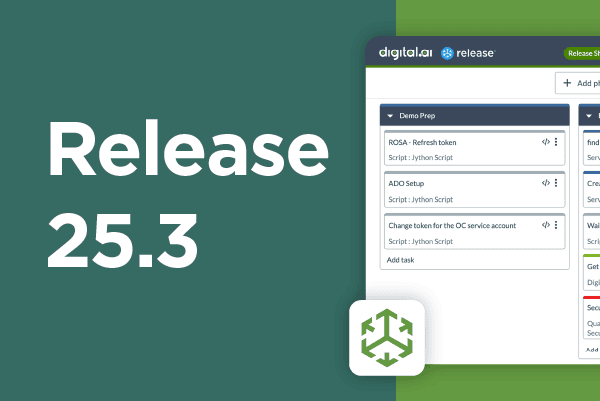Table of Contents
Related Blogs
DevOps is a main value driver in most organizations. Using value stream management (VSM) and value stream mapping can help stakeholders understand DevOps’ value.
If you’re a software or digital solutions company, you may use DevOps to help you maintain and improve your products. You may even consider it the main driver of value in your organization. Yet in many organizations, the measurable value provided by your products doesn’t get much visibility or attention. As a result, key stakeholder groups may not grasp the value directly provided by DevOps activities.
This lack of attention to value happens not by design, but by circumstance. DevOps teams simply have their own priorities to worry about, such as release velocity and mean time to resolve problems (MTTR). In the process of performing their job, they may not consider that emphasizing their value contributions is a priority exercise.
Failing to visualize how value travels through DevOps and into the hands of key stakeholders increases the team’s risk of encountering extra challenges, inefficiencies, and a lack of alignment with the organization. Understanding value can help DevOps teams and activities not only succeed in their objectives but also identify the right objectives to pursue from a value standpoint.
Teams can employ value stream management (VSM) and value stream mapping to help stakeholders visualize and understand DevOps’ value in the organization. Documenting the flow of value from request to delivery lets DevOps leaders connect the dots between on-the-floor activities and measurable value to stakeholders. They can use this documentation to not only justify their decisions but also to optimize them in order to produce more consistent value at a faster velocity.
DevOps supplies direct value to customers, no middleman needed
It’s a myth that DevOps activities don’t produce direct value to customers and other stakeholder groups. After all, DevOps exists to solve real problems.
As Marc Rix, SAFe Fellow and Curriculum Manager at Scaled Agile, says, “Business value is the ultimate goal of DevOps, and value begins and ends with the customer.”
In IT, every upgraded feature or resolved deficiency can add value to a customer’s day. For example, when users have a cloud-hosted tool with a feature that has a reputation for taking several minutes to load, the time wasted results in a growing dislike for the feature. Fixing the load time gives users enhanced productivity which significantly improves their product satisfaction and utility.
The issue, then, isn’t with DevOps’ actual value creation, but with its perception of value creation. DevOps is often seen as a product creation silo, rather than as part of the combined organization.
The DevOps Handbook says, “In DevOps, we define the value stream as the process required to turn a business hypothesis into a technology-enabled service that provides value to the customer.” This very definition makes it difficult to define DevOps’ value because DevOps is the actual process to move from product to profit.
The strategy is often guided by leaders outside of DevOps, while value to the organization is measured by a different department, like sales or marketing. This hierarchy can make it feel like DevOps teams are disconnected from the value stream, when in fact DevOps processes are an integral part of value creation. To solve this siloed impression, DevOps teams and tools need to be capable of identifying metrics that measure direct value to customers and that can be used to align business objectives.
Revealing what DevOps does to create value through VSM
To document their contribution, DevOps teams must not have a siloed view of goals and KPIs. Yet, the metrics they currently use may fail to account for value creation, at least not in a direct sense.
Metrics like deployment frequency, for instance, don’t inherently measure value created from operations within IT operations. It’s true that more releases, performed faster, can benefit the organization — but only if the releases in the process are also considered useful to customers, beneficial to sales, or can show other value.
IT organizations also need to balance product stability with release velocity. Waiting too long between releases can directly impact a product’s usability, appeal, and utility. Products should be upgraded or replaced before they become undesirable to use or extremely difficult to support.
IT leaders interested in shifting to a value perspective can leverage our suggested technique for stakeholder analysis in order to identify goals and appropriate metrics that DevOps teams may not consider. For example, say that certain stakeholders can benefit from an increase in daily active users. With this metric in focus, IT leaders can then consider how DevOps processes and individual tasks facilitate positive progress in this metric.
Monitoring metrics through the use of analytics best practices aggregates the most important data in order to reveal a single source of truth for each KPI. By leveraging its own systems of record, an organization can attain accurate visibility without the risk of skewed or incomplete reports that come from respective data silos’ integrated reporting functions.
Organizations can visualize how value flows through every touchpoint in both dev and ops by mapping each specific task. After that, ask “how does each step affect value?” from the standpoint of key-value indicating metrics. Then, you can begin to manage and optimize value flow by targeting steps where value creation can be improved.
As the DevOps Research & Assessment process guide to the visibility of work within the value stream notes, “Start with making sure the team has visual management displays that show their work and its flow through the part of the value stream that is closest to them, including both the upstream and downstream parts of the process. Record how long it takes work to get through the process, and how often rework must be performed because the team didn’t get it right the first time. This will uncover your early and best opportunities for improvement at the team level.”
Data supplied from key systems of record is critical, in order to measure value flow objectively and provide a single source of truth.
“To understand from a data-driven perspective, collect that data automatically, correlate it by release, by team, by application, by location depending on where your value stream is, where you want to focus,” advises Andi Mann, Chief Technology Advocate at Splunk. “Then you’ve got this data-driven value map of what’s taking how long and you can keep running that for days, for weeks, for months.”
Depicting (and optimizing) value in DevOps through VSM
Once the value flow is visible, DevOps teams can start making proactive decisions to improve value without directives from above or the need of other teams to measure value creation. DevOps teams can then apply lean management techniques such as asking: Where is waste generated? Where can value flow be more efficient?
Jayne Groll, co-founder, and CEO of the DevOps Institute, suggests, “Speed and quality. Those are really the two key metrics when we look at value stream mapping. How long is it taking us to deliver value and what is the quality associated with that value creation?”
For example, instead of relying upon directives from management to choose what improvements to pull from the repository, developers can make that choice on their own based on user metrics. Operations can also encourage certain practices based on performance defects and other problems that can stem from development and hurt value creation.
Increased autonomy can lead to higher job satisfaction and a feeling of direct connection to positive business results, as well as help teams who feel disconnected due to remote work or other situations.
The ultimate goal is for DevOps teams to take ownership of value. As product creators and caretakers, they are the main driver of value, and they don’t need to feel disconnected from the overall flow of value through the organization. DevOps leaders have the talent and intelligence to make decisions that can enhance value creation on their own.
Watch this webinar with Digital.ai President Derek Langone, CXO Thomas Randall, and DevOps enthusiast, Gene Kim for a look back at the year in DevOps and a conversation about what is to come.
Are you ready to scale your enterprise?
Explore
What's New In The World of Digital.ai
Securing AI-Generated Code with Digital.ai Release
Introduction: AI Code Security and Its Emerging Risks Large Language…
The Return to Bare Metal: Why We’re Done Pretending
For the better part of two decades, we’ve been sold…
Deliver with Evidence: Safer Orchestration, Smarter Rollouts, and Scalable Processes (Release 25.3)
According to recent surveys, 31% of DevOps leaders said a…




